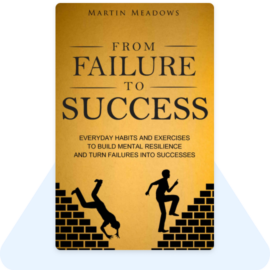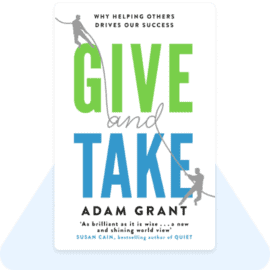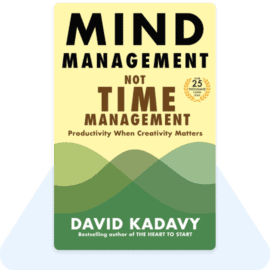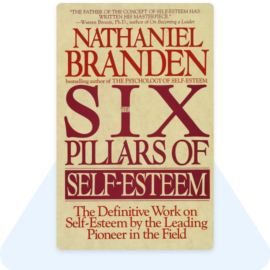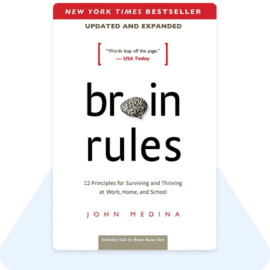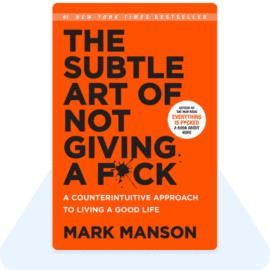How many times have you failed and given up out of desperation? How often does failure ruin your resolve? Anything will change with a bit of hope to avoid falling repeatedly. Start here if you want to take the path from Failure to Success.
In this summary, we will discuss the book “From Failure to Success,” written by Martin Meadows. The book will teach you the daily habits and exercises necessary to overcome failure and achieve success.
Introduction
The book shows what failure is and how to deal with it in a creative way that will help you achieve success. The author has faced many failures in his life. In the book, he narrates his great experience, how he turned a failure into a friend and finally achieved the success he had failed to do for years. Failure is a fact of life.
You can be angry with him or befriend him and use it as a tool to change your life. Instead, if you want to adopt a creative approach, this book will help you. You, too, can develop mental flexibility and convert into failure success!
There are many reasons to choose this book, but the two most important one is this; first of all, there are many exercises in it so that you can implement the learning of the book. Secondly, when I ordered this book, I was surprised to see the price of this book. And many people might not be able to order this book at all. After seeing this book summary, everyone can decide whether to order it and read it in detail. So read this summary very carefully till the end. And I am sure you will find answers to your questions in this book.
From this book, you will learn:
- Failure A Different Way to Think About
- Seven types of loss and how to handle them.
- Five rules and practices to develop and maintain a friendly mindset of success
- Failure 5-Step Process to Cope with
- 3 Master Strategies to Build Strength to Keep Going
- 4 Reasons to Give Up
So let’s get started.
Part 1: What is your Definition of Failure?
Failure means that when you fail to learn something from an event, it is your failure. If you constantly step out of your comfort zone and try new things, you’ll always learn something new – and that will make you stronger and help you achieve your long-term goals.
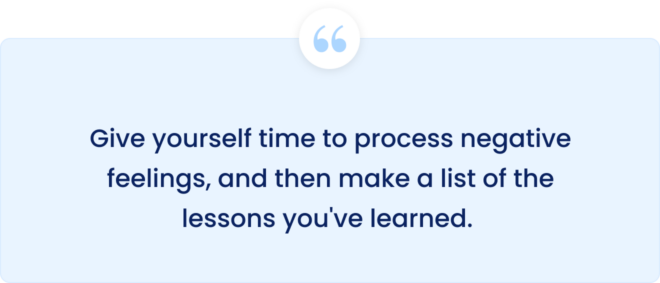
You control how much effect failure will have on your future. You can use the metaphors mentioned in the book to change your belief about failure. You can use three powerful metaphors about failure:
- Thinking of Failure to navigate a maze, in which each failure helps you get closer to the end.
- Seeing failure as a Sculpture Tool.
- And seeing failure as a filter that kills people who are not dedicated enough
Exercise: Learn from failure.
Don’t be tempted to let go of anger, frustration, discouragement, or self-guilt the next time you fail. Give yourself time to process negative feelings, and then list the lessons you’ve learned from not reaching your desired result.
Part 2: 7 Types of Failure and How to Handle Them
Failure 1: Dealing with a Failure Which You Cannot Stop
The first minor type of failure is that which you cannot stop. But there’s a lot you can do to handle it better. The most powerful approach is to adopt the philosophy of Stoicism, meaning that if something is out of your control, you need to accept it and move on.
Exercise: Adopt uncomfortable changes.
Practice consciously adapting to uncomfortable changes, not avoiding your feelings (the exit or refusal makes things worse), and remind yourself that some items are not up to you and that they are real. Let me be your source of comfort as the matter is settled, and you are free to proceed.
Exercise: Remember that everything is temporary.
Adopting this philosophy can help you in two ways: you’ll stop taking things lightly, try harder to keep them up and be better able to deal with the injury.
Failure 2: Dealing with Failure Due to Unreal Expectations
The second minor type of Failure is Failure due to unreal expectations. Some people get caught in a cycle where they set unrealistic expectations, fail, try again, and fail again for being fake with what they can achieve. Measures to prevent this failure from happening:
- Do the proper research before setting the goal. Stupidity leads to unreal expectations, which leads to loss. Be careful when you are a newbie. Let’s say you’ll get average results and focus on Proven Strategies instead of looking for magic
- Be prepared to change your approach if your current strategy is not working. Being stubborn will not work when your approach is not practical.
- Accept that things rarely go according to plan. It may take you longer than expected to reach your goal, and you will probably underestimate what you can achieve in less time. So be patient.
Failure 3: Dealing with Failure Due to Lack of Focus
The third minor type of failure is a need for more focus. When you focus on too many different goals, you will help your performance. This will lead you to failure faster because it is only possible to reach essential goals by leaving behind less critical objectives.
- To avoid this type of failure, prioritize big goals and spend most of your energy on accomplishing them. It is essential to limit your focus for success.
- Embrace boredom and stick to the things that work well for you, even if they are no longer as exciting as initially.
Exercise: Focus on the Extreme Focus
The essence of the goal you want to reach. Often you can point to just one crucial action that will make every other effort easier or useless. Take this action to gain clarity and attention; Focus on the Extreme Focus.
Failure 4: Dealing with Failure Driven by Fear
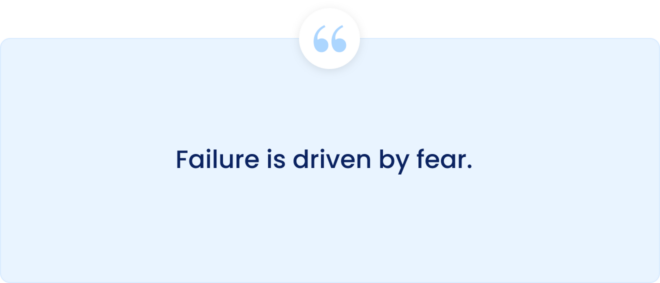
The fourth type of Failure: Failure is driven by fear. It can be divided into: fear of the unknown, fear of rejection, fear of losing one’s identity, and fear of losing a relationship. When dealing with the fear of the unknown and fear of rejection, the only way to prevent it is to put yourself in difficult and uncomfortable situations in which you are faced with the unknown or rejection. The more times you do it, the easier you’ll be with it. Soon you’ll learn to act despite those disliked feelings of discomfort, and fear will stop being a paralyzing factor in your life.
When you fail for fear of losing your identity, it is because there are negative aspects of your life that you consider to be “you”. If you think obesity, poverty, shyness, or any other negative traits are part of your identity, throwing them out is scary and inconvenient.
But you have to realize that life is growth. The sooner you eliminate those terrible things, the better your life will be. Eventually, people fear losing connection when working or reaching their adventure goals. This fear is not unfounded. Some people will consider your efforts as a threat to their self-respect. The best solution is to hang out with people who don’t behave like this and actively help you reach your goals.
Failure 5: Dealing with Failure Due to Self-sabotage
Fifth kind of failure: Failure due to self-sabotage. When an individual lacks the self-confidence to face their fears boldly or does not believe that they can achieve a given goal as a human being, if you do not trust them, then they will compromise their efforts. This behavior usually involves making excuses or circumstances, leading to failure or inaction.
For example, an individual would unknowingly prefer to stay up late for some reason, so they may look tired during job interviews and reduce their chances of success. Then, if they fail, they think they defend their ego by saying things like, “I didn’t get this job because I had to get up late.”
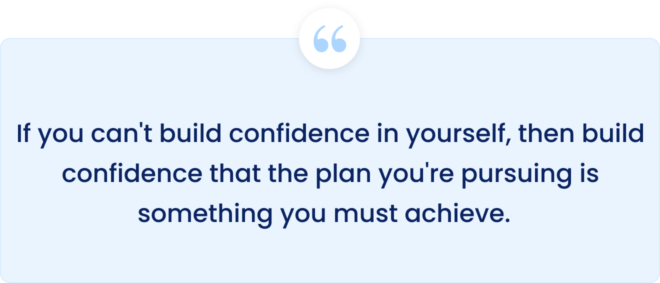
Exercise: Practice Defensive Pessimism. Trusting your goal is the first step in dealing with this kind of failure. If you can’t build confidence in yourself, then build confidence that the plan you’re pursuing is something you must achieve. This will help you create more confidence in your abilities to accomplish this.
The second step is to replace the strategy of self-disability (making up barriers and excuses to avoid worry or justify your failure) with a more practical approach: Defensive Pessimism Visualizes negative consequences and blames ourselves for every possible challenge. Prepare. As a result, they worry less and perform better.
To become a Defensive Pessimist, consider your concerns individually and create a strategy to manage them. On the other hand, strategic optimists believe that things will turn out well, which helps them take care of themselves and perform at a higher level.
To become more optimistic, change your control by claiming personal responsibility for every failure and success in your life, increasing your comfort zone for self-confidence, going into uncomfortable situations, and taking lessons instead of excusing adverse events. Look at them again to see why you’re failing.
After all, live in a fantasy world. It means adopting the belief that there is no limit to moving forward. Be realistic about the time frame you need to reach success and resist the social programming that tells you to be average. Whenever you feel deep down in your heart that you are right, dare to go against everything stopping you.
Failure 6: Dealing with Failure Because of Eagerness
People often fail because they are impatient. Frustrated with the slow progress, they either give up or set an unstable pace. In both cases, failure is more likely than success. If you often fail because slow progress discourages you, focus on reaching the goal rather than just running it within a set time frame.
Deadlines can’t dictate your life, be careful not to compare yourself to others or get angry that you fail while others win. You may not be as good at one thing as others but perform better at something else. In the long run, you have a greater chance of achieving better than those people, so don’t take your talent for granted.
If you fail because you’re so desperate to reach your goal that you don’t stick to a stable daily routine, understand the difference between sprinting and marathoning. A brief sprint can be extremely helpful for getting up to starting speed with a new goal.
For this, decide daily purposes and focus on achieving them. This will go a long way in helping you, after a fixed period (like a few weeks or maybe a few months), build a more sustainable daily routine that will allow you to plan well for those big goals that take years to achieve. Because small steps taken daily and continuously are better than accidents and risks.
Failure 7: Dealing with Failure Due to Self-licensing
Self-licensing is a phenomenon in which a person engaged in good behavior is more likely to engage in negative behavior, such as:-
Weight loss: In such a situation, pay attention to what you eat after exercise. Do not take too many high-calorie foods during a workout. Sometimes people consume it more than necessary, due to which practice starts contributing to weight gain instead of reducing their weight.
Regarding health, don’t unthinkingly believe in “healthy” foods; just because some food comes with a “healthy” label doesn’t mean it’s healthy for you. So eat only what can help you stay healthy.
In finance, be aware that you are saying no to unnecessary purchases whenever you make a sound financial decision. So be bright towards saving and earning money, and don’t stock up on things you don’t need to be an intelligent buyer. Transfer it to an automatic monthly savings account to save at least a small part of your income. Set a low spending limit on your credit card.
Appreciate yourself for those decisions by making which you have made progress in your health and image, like eating a healthy salad instead of chocolate, exercising instead of laziness, and eating more calories than you need.
Part 2: 5 Rules and Practices for Developing and Maintaining a Success-Friendly Mindset
Apart from these five rules, it would help if you listened to the Mindset book on Kuku FM. This book demonstrates how we can achieve our goals by changing our mindset.
Rule 1: You should live your life the hard way and adopt uncertainty continuously
The quality of your life depends on how good you are at dealing with fear and Uncertainty, so be assured that you fight against an uncomfortable situation rather than avoid it. However, it’s not always fun to put yourself in such a situation, but This is one of the best ways to attract more success in your life.
Exercise: living life the hard way. Try to put yourself in uncomfortable or scary situations at least once a week. This will help strengthen you and prepare you to handle any unexpected trouble calmly. The next time you feel uncertain or afraid about something, tell yourself that you must do it right because you’re scared.
Rule 2: you should show your ego the middle finger
The fear of embarrassment should not be on your mind when you learn something new. If you don’t try again for fear of not being fooled, you’re actually on your way to failure. Don’t take your losses seriously.
Exercise: Try Again.
If you protect your ego by avoiding looking stupid when learning something new, put yourself in many such situations.
Instead of worrying about what others think of you, try again.
Rule 3: Feel yourself worthy of success
If you do not believe that you are capable of success, then you will waste your efforts. If you limit your development to the point that your progress may hurt others, remind yourself that becoming a better person will give you more resources to help them.
If you need to recognize your strengths, list your inspirations, relationships, and other forces to help you achieve your goals. Then think about past situations you’ve solved, and be thankful for them, so you’ll feel that you deserve to be successful.
Exercise: Mining for resources.

Here are three very effective questions that will help you identify your strengths and instruct your mind to think more creatively:
1. Why is it so important to you to achieve your goal?
Take the necessary time to write the answer to this question. The stronger your reasons, the easier it will be to increase your self-confidence.
2. What are your unique strengths or resources that will help you reach your goals?
In this, write personal skills, qualities, and other resources to help you achieve your objective.
3. How did you use your strengths or resources to achieve your previous goals?
After making a list of reasons why you are feeling strong – in this answer, write something like this: that you are a loving person, you are punctual, you have honesty, you love education, You give importance, or you think big – you’ll achieve your true, inner self-confidence. Reread your list whenever you are in doubt until you feel confident again.
Rule 4: You have to take personal responsibility
Take personal responsibility for your every success and failure. This is a specialty adopted by all successful people.

Exercise: Accept responsibility.
For this, follow these four steps:
- Reminisce about past experiences that you overcame.
- Remember at least one of your past failures due to which you consider some external factor.
- Adopt those options which contribute to keeping you challenged in the present and future.
- And finally, remove words like “I don’t have a choice” from your vocabulary and add how I can do it instead.
Rule 5: Identify what you want and go after it
You should identify what you want in your life and go after it. Keeping a clear outlook on your life will help you focus and take advantage of the right opportunities. But if you do not do this, then by not taking advantage of the opportunities, you will not be able to become successful, and you will regret life.
Exercise: Create A Vision.
Please create your vision of how you want to live your life to the fullest and list the goals you want to reach to help you identify them when the right opportunity arises. Make your vision keeping in mind your health, relationships, money, and whole life.
Prt 3: 5-Step Process for Dealing with Failure and Bouncing Back
Step 1: Process Failure
The first step to dealing with failure is to process it. Failure makes you feel weak, and it will sting life too. It could be to such an extent that you might think of giving a redesign or feel very sad. It’s all minor, and you shouldn’t deny these feelings. When you fail, you become numb, deny it, and suppress the feelings it causes. In such a situation, some people are surprised and lose hope of succeeding next time. Instead of dealing with failure, accept what happened and move on. Human beings need emotional diversity. After the loss, sadness or discouragement finally turns into a different state; the most possible is that it turns into anger.
Step 2: Excuse Yourself
The second step in dealing with failure is to forgive yourself. Some people who experience loss start hating themselves; while this is not true, you should forgive yourself for your defeat and regain self-confidence. Turning self-criticism into self-compassion is essential for dealing with failure and regaining new self-confidence.
Exercise: Be your best friend
The three best ways to increase kindness to yourself are:
- Imagine helping a friend deal with failure (for this, you can write a letter like a letter your best friend can write to raise your expectations.
- While listening to your self-critical voice, turn it into positive self-talking.
- Or nurture yourself by doing things that make you feel good.
Step 3: Change your state
The third step in dealing with failure is to change your emotional state. To convert loss into success, make decisions like that and stick to them. To avoid this, indulge in such activities which help remove failure from the mind because staying at home and getting angry at a loss will not change anything.
Step 4: Learn from it
The fourth step to dealing with failure is to learn from your failure. To get started:
- Make a list of the lessons learned from your failure.
- Find a way to help you change your perspective and succeed on the next try.
- Take as much time as you need to identify the lessons from failure.
- To resume working on your goal: Spending a few days analyzing failure is better than failing again just because of the same (unknown) reason. Therefore, recognize your essential lessons and then start working towards your goal in the right way.
Step 5: Resume your efforts
The fifth and last step to recover from failure is to start your efforts again. You may feel some initial reluctance when you realize you’re back where you started, but when you hit a few small victories the first time, it will help you end your failures quickly.
You can choose one of these two approaches to recover from failure:
Start with a big bang and with an extreme approach to produce quick results, such as the goal of getting up early in the morning.
Or take small steps to get yourself back into a daily routine slowly. For this, you can resume your routine with a hard workout, but it will be accessible at first, but after some time, it can become challenging to do it consistently, so a better approach is to do a short, easy session. Start with, and then gradually make your workout longer and harder.
Both approaches can be equally effective, So choose the one you think will work best for your situation.
Part 4: Three Master Strategies to Build Strength, to Keep Moving
Strategy 1: Develop a passion
You must have a long-term resolution to keep going; the best way to make it happen is to develop a long-term passion that can inspire you to persevere despite the challenges. When working for a long time, it will help you to maintain your brain power. Also, you will feel good about yourself. Develop a passion that will force you to step out of your comfort zone and provide support you can apply as you work on other goals. This is a powerful master strategy to become a successful person.
When you devote yourself to a passion over a long period, you’ll also learn how to have a stronger will and more robust ethics for a job.

Exercise: Devote Yourself
Find something that you can be passionate about for a long time. This will help you go into situations where you can increase your mental strength. Such ideas include sports, public speaking, stand-up comedy, dance, yoga, and travel.
Ideally, your passion should require you to step out of your comfort zone constantly; writing, programming, cooking, or creative skills such as drawing, painting, or photography are also good ways.
Strategy 2: Take the Experimental Approach
You’ll have to take an experimental approach to build the strength to keep going. Whenever you set high expectations and believe you can’t give up, you set yourself up for a possible knockout-like bout of disappointment. When you repeat this behavior repeatedly, you will rapidly deplete your willpower resources.
Exercise: Prepare an experiment
To do a successful experiment, set a budget (choose a specific amount of resources you’ll devote to it, whether it’s money, time, or energy) and run it until you get concrete data.

Strategy 3: Find value regardless of the result
Often the main reason it’s hard to keep going is because you think what you’re doing is worthless. Understandably, you might get frustrated when you don’t get any results. This is normal because, after all, who would want to continue doing something useless? This logic is understandable, but your efforts are rarely in vain.
Even if you feel like you need to make more progress, there’s almost always some value to add to your work. It would help if you recognized it; identifying it can help you move forward. When you consider your efforts a complete waste of time, you will, without a doubt, feel frustrated and not want to move on. No one wants to waste their time or energy on things that do not produce any results. That’s why knowing your efforts and results are valuable is essential.
Exercise: Dig for value
Whenever you think something is entirely worthless, thank you for having this experience, and instead of being disappointed, see what value you put on your side.
Part 5: Four reasons to give up
Reason 1: If It’s Not Your Congruent, Then Leave It
If you’re chasing something just because society tells you to do it, like going to college or working a job you hate, you’re wasting resources you don’t need. One could spend on something valuable in one’s life. If you associate your goal primarily with negative emotions in everyday life, you should stop doing so, as such an objective is not congruent with your personality.
By working on the wrong goal, not only do you lose the time and energy invested in accomplishing that objective. At the same time, it may also be regretting the lost opportunities and mismanaged resources. Doing this will not benefit you, but you will waste your time and energy, so never do anything you do not like to do. Sometimes it’s better to say no.
Reason 2: Give up if you don’t achieve the level of performance or achievement you want
While setting your goal, define what level of achievement you want to reach to feel satisfied with your efforts. If your performance is less than achievement, then either increase your actions or you should give up. Suppose you are dissatisfied with the results you have achieved after the right amount of time and resources invested in your goal, and you do not see any possibility of improvement. In that case, you should find something else in which you are better.
When you are not satisfied with the results you have achieved, then the decision to give up or continue comes in front of you to manage your expectations. If you can feel good by lowering your expectations, there is no need to stop; keep going. But, if you refuse to accept the low standards, it is better to leave them. In such a situation, if you have not got the desired results, you should give up and take steps to move forward.
Reason 3: Give up if you keep going only because of sinking expenses
In economics and business, a sunk cost is a cost you have already incurred and cannot recover. Like if you buy a non-refundable movie ticket, it’s a sunk cost. If you don’t want to watch the movie anymore, a logical option would be not to go to the theatre. If you leave, you will suffer twice: losing money spent on tickets and wasting time.
You could have done something better than watching a movie like this. Life is good as long as you care about your objective. If you’re pursuing your goal only because of sunk costs, remember that costs you’ve already incurred can’t be recovered – so you should let them go. And by learning from it, avoid those kinds of bad expenses next time.
Reason 4: Give up if you’re constantly playing with Catch-Up
If you consistently fall behind with your goal, your goal may not be as important to you as you think. Or else you will have to skip the rest of the goals to make time for this objective. If you cannot make time for your goal, but you do get time to do the rest, then it indicates that your inspiration is not strong enough or your objective is no longer your priority.
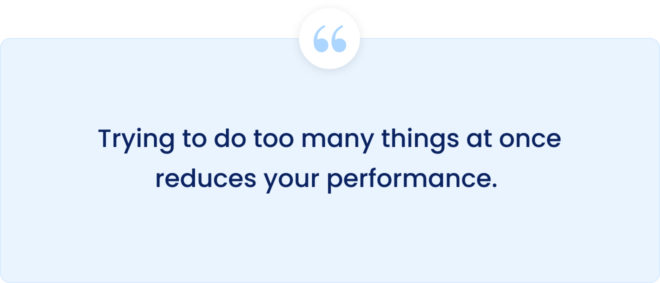
If you want to work on your goal, but other things are constantly distracting you, you have to let go of the things distracting you to make time for your essential goal. Just as trying to do too many things at once reduces your performance, in the same way chasing too many goals also reduces your performance.
Suppose you are constantly playing catch-up with your target. If you can make time for other things but rarely find time for your essential goal, then you may no longer care about that goal as you used to, and it may be better for you. You might give up on that goal. If you leave some less important goals and focus more on your primary purpose, you will be able to achieve the critical objectives.
Conclusion
So friends go through the book “From Failure to Success” about how to convert Failure into Success. In the book, many vital habits and exercises have been told, which you can use daily to progress towards success by eliminating failure. With the help of the book, you can face failure and move forward in your life. I hope you have understood the book’s important aspects very well and will apply them in your life for success.
Now you know:
- Failure A Different Way to Think About
- Seven types of failure and how to handle them.
- Five rules and practices to develop and maintain a friendly mindset of success
- Failure 5-Step Process to Cope with
- 3 Master Strategies to Build Strength to Keep Going
- 4 Reasons to Give Up
From Failure to Success Book Review
From Failure to Success” is an inspiring and insightful read that delves into the journeys of individuals who transformed setbacks into triumphs.
The book highlights the power of resilience, determination, and adaptability through captivating narratives.
The author skillfully illustrates how embracing failures as learning opportunities can pave the way for eventual success.
A motivational guide emphasizing the importance of perseverance and a growth mindset, this book is a must-read for anyone seeking encouragement to overcome obstacles and achieve their goals. It’s a beacon of hope that showcases the transformative potential of a positive outlook on setbacks.
Thank you.
Contents

